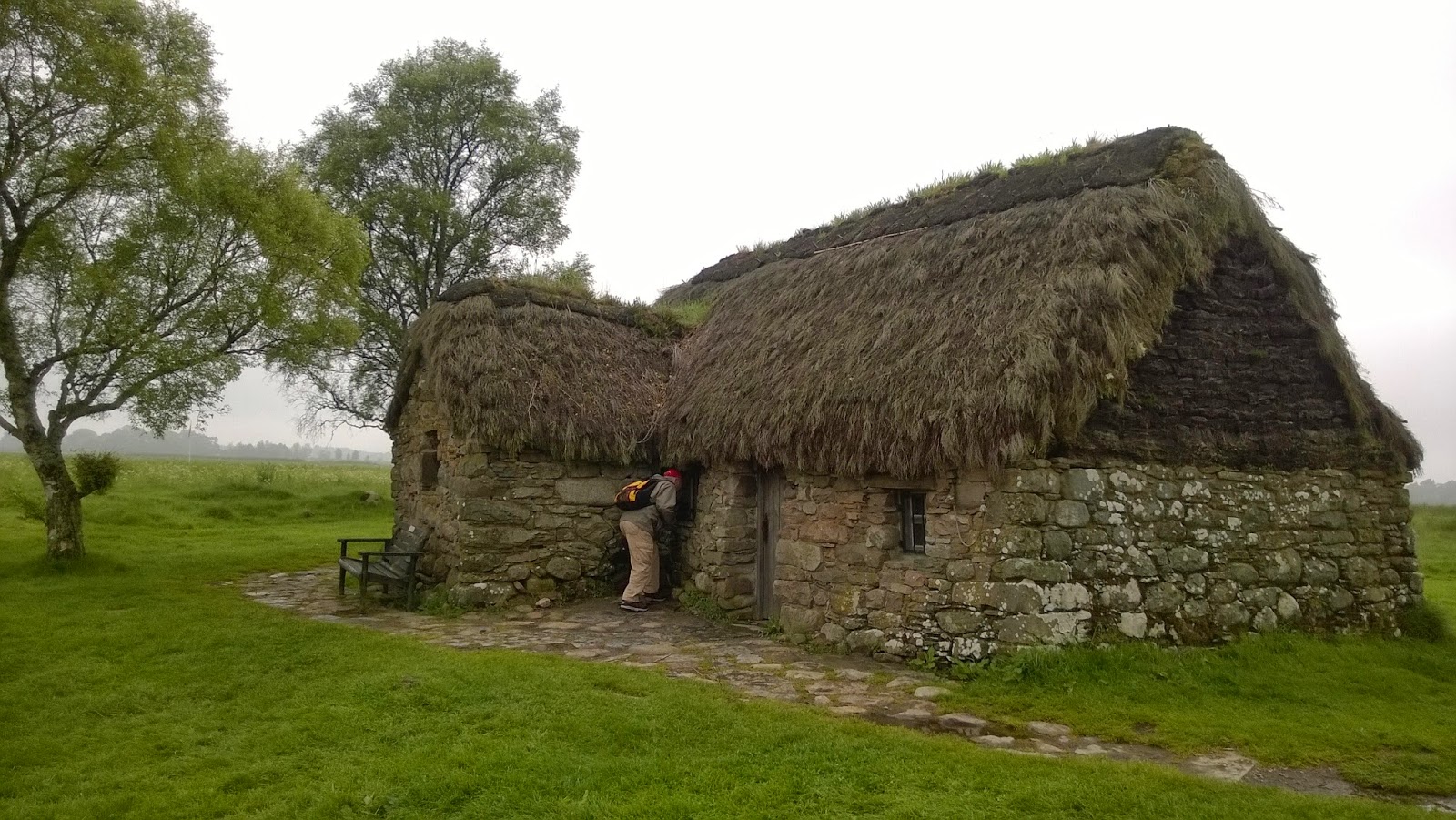 |
| Yellow gorse and memorial cairn erected 1881 by Duncan Forbes, owner of land |
I had wanted to visit the Culloden battle site for a number of years, having read much about the Jacobites and their risings in 1709, 1715, and their final act in 1745-6, to put the Stuarts back on the throne of Great Britain. The morning Jay and I went, it had rained during the night and the day was misty, much as it had been on April 16, 1746.
 |
| At time of battle, this was grazing land with rock walls. |
If you have visited Gettysburg, or any Civil War battlefield such as Antietam or Bull Run, there is nothing joyous in the visit. You are filled with sadness. Over two thousand men fell here, mostly highlanders, but some lowlanders, too, who had borne arms, led by highland chiefs following Charles Edward Stuart - Bonnie Prince Charlie - to reinstate his father, the Old Pretender, son of King James II and VI of England and Scotland. If you're interested in the actual battle, you can read about it
here. Visitors, perhaps descendants of clansmen who fought still leave mementos out in the gorse and heather.
After the battle, the locals were ordered by Government forces to dig the mass graves for the highlanders. In 1881 Duncan Forbes, the owner of the land, had memorial stones for the clans set where these mass graves lay.
 |
| Clan Fraser |
 |
| Mixed clans |
 |
| Clan MacGillivray |
 |
| Clan Cameron |
 |
| Well of the Dead |
 |
| Clan Stewart of Appin |
 |
| Clans MacGillivray, MacLean, MacLaughlan, Athol Highlanders |
 |
| Clan MacKintosh |
 |
| French Jacobites (many of Irish and Scottish descent), who protected the rear of the Highlanders' retreat |
The lay of a battlefield will often decide the victory. The marsh, still here as on the morning of the battle, caused the Jacobites on the left to swerve around it to the right, bunching up in the middle, thus failing to assault the flank of the Government forces.
Note the fellow looking into the window of this small cottage rebuilt after the battle, which was thought to have housed wounded Government soldiers. There is still some doubt where from 50 to 300 British soldiers are thought to have been buried, but archaeologists are working on locating the exact site -- and may actually have by now.
But, for all of the solemnity we felt, there was time for levity in the large new (2007) visitor's center, where Jay was allowed to don a targe and raise a sword just to see how they felt.
And we had lunch in the cafeteria, which included this bottle of lemonade flavored with rose water - very good. I drank most of it before remembering to photograph it.


















Oh Karen, this is a wonderful post. It must have been haunting. Your pictures are so beautiful--the stones, the gorse and heather, that storybook cottage!
ReplyDeleteHello Karen....I have many of the same photos, taken on my trip of last October. I still have not be able to write a post about this...my throat tightens when I think about that fateful day.
ReplyDelete